Key takeaways
- Formative assessment fosters a continuous dialogue between teachers and students, enhancing understanding and engagement in the learning process.
- It serves as a vital tool for identifying student struggles in real-time, allowing for immediate adjustments to teaching strategies.
- Activist teachers promote equitable and inclusive assessment practices, empowering student voices and disrupting traditional methods.
- Practical strategies like exit tickets and peer feedback create dynamic classroom environments that support collaborative learning and reflection.
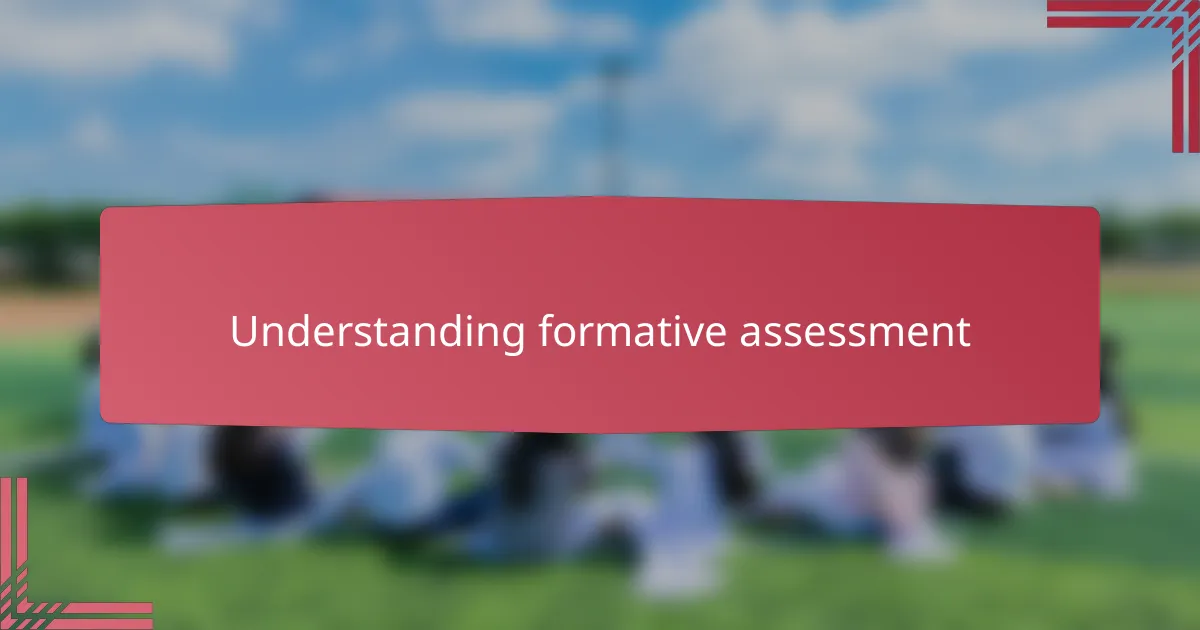
Understanding formative assessment
Formative assessment, in my view, is much more than just quizzes or quick checks during a lesson. It’s a continuous dialogue between teacher and student—a way to really understand where learners are in their thinking. Have you ever noticed how a simple question in class can open up a whole new pathway for understanding? That’s the power of formative assessment.
From my experience, formative assessment creates space for reflection, both for the student and me as the educator. It’s not about catching mistakes but uncovering thinking, which helps shape what comes next. Don’t you find it frustrating when learning feels one-sided? Formative assessment flips that script and makes learning an interactive journey.
I often think about how formative assessments help build trust in the classroom. When students see that their ideas matter and that their progress is closely followed, it really motivates them to engage more deeply. Isn’t that the kind of connection every teacher hopes to foster? For me, this is where the true value of formative assessment shines.

Importance of formative assessment in teaching
Formative assessment is, to me, the heartbeat of effective teaching because it shines a light on the learning process as it happens. I remember times when a quick check-in revealed a student’s confusion that would have otherwise gone unnoticed until it was too late to help. Isn’t that kind of awareness priceless for both teacher and learner?
When I use formative assessment, it feels like having a map during a journey—guiding me to adjust my teaching in real time. This immediate feedback loop prevents frustration from building up and keeps students from feeling lost. Have you ever taught a lesson where you could sense that disconnect? Formative assessment helps bridge that gap.
Beyond its practical benefits, I find formative assessment profoundly humanizing. It turns teaching from a monologue into a conversation, where every insight from students is a clue to better support their growth. When students realize their voice truly influences the classroom, their motivation and confidence soar. Isn’t that the ultimate goal we all strive for?
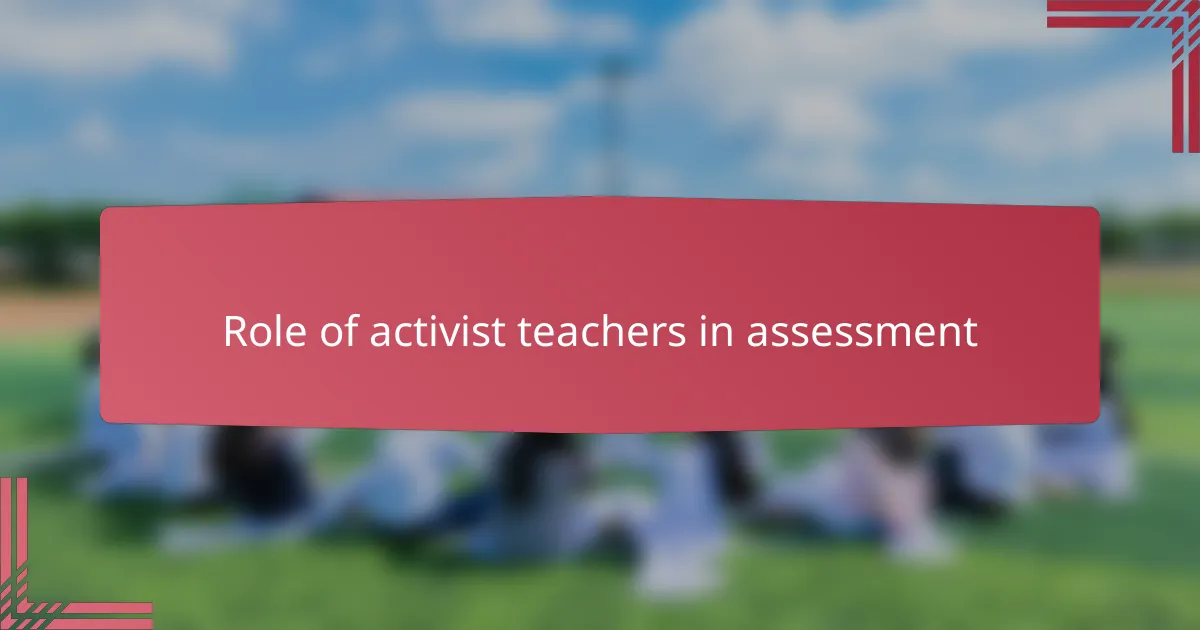
Role of activist teachers in assessment
Activist teachers play a crucial role in shaping assessment practices that go beyond ticking boxes. From my experience, they challenge the traditional, rigid ways of measuring learning and instead push for assessments that are fair, inclusive, and responsive to students’ diverse needs. Have you noticed how this approach often leads to richer insights about a student’s progress than standard tests ever could?
I’ve seen firsthand how activist teachers use their influence to advocate for formative assessment as a tool of empowerment rather than control. They see assessments as moments to amplify student voices, not silence them. This mindset transforms classrooms into spaces where students feel valued and understood, which, honestly, makes all the difference in learning.
What strikes me most is the courage activist teachers demonstrate when they disrupt assessment norms. It’s not always easy to push back against systems built on tradition, yet they persist because they believe in education as a force for equity and justice. Don’t you think that kind of dedication ultimately benefits every learner in profound ways?
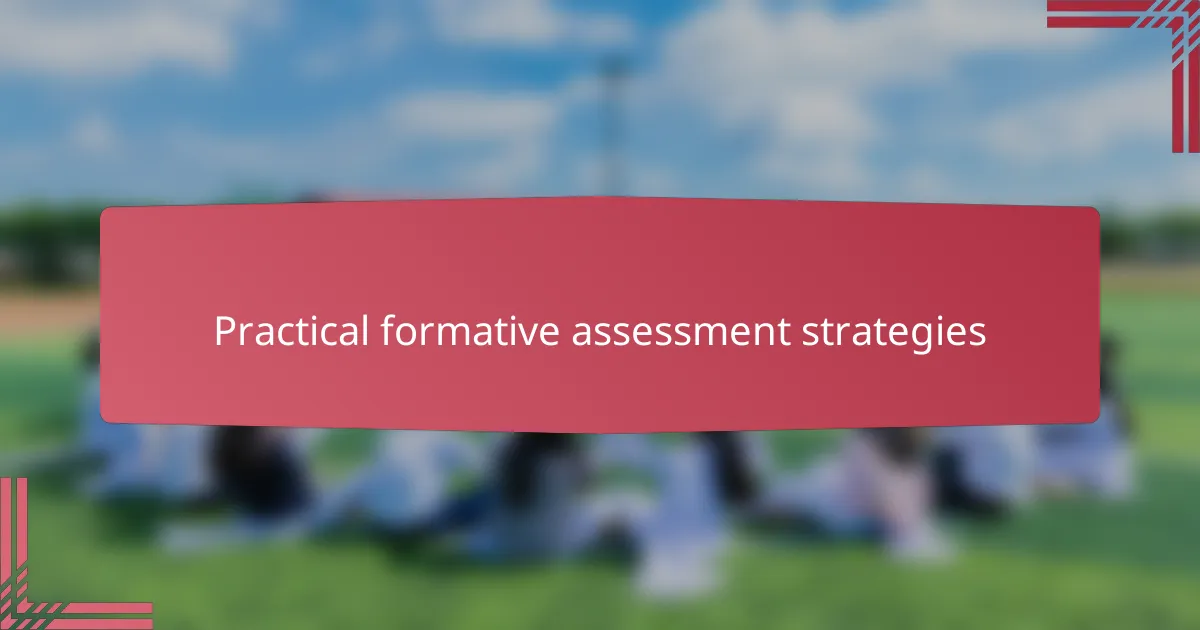
Practical formative assessment strategies
One practical strategy I lean on is using exit tickets—those quick, end-of-lesson prompts that ask students to reflect on what they’ve learned. I find they give me an instant snapshot of understanding, and sometimes, a surprising glimpse into what’s still unclear. Have you ever been caught off guard by a student’s response that you didn’t expect? Those moments have reshaped my teaching more than once.
Another approach I swear by is incorporating peer feedback. When students review each other’s work, it creates a space for dialogue and deeper thinking. I’ve noticed that this doesn’t just build skills but also fosters a classroom culture where learning is shared and supported. Isn’t it empowering when students become teachers themselves, even if just briefly?
Lastly, I often use real-time oral questioning throughout lessons—not the kind that puts kids on the spot, but questions that invite ideas and encourage risk-taking. This technique keeps me attuned to their thinking and allows for immediate adjustment. From my experience, it’s those moments of spontaneous exchange that breathe life into learning, making the classroom buzz with energy and curiosity.
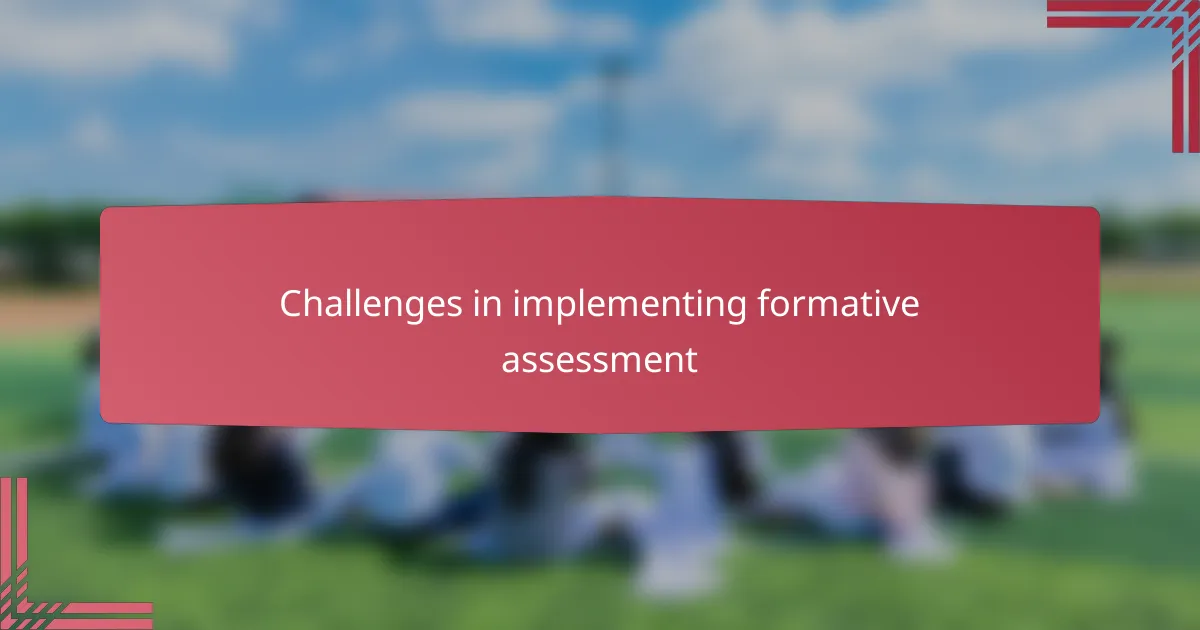
Challenges in implementing formative assessment
Implementing formative assessment isn’t always smooth sailing. I’ve encountered moments where time constraints made it hard to pause and really listen to every student’s thinking. Have you ever felt rushed during a lesson, knowing you wanted to dig deeper but couldn’t? That tension between curriculum demands and meaningful assessment is a real challenge.
Another hurdle I’ve faced is getting students comfortable with the process. Sometimes, learners worry that formative checks are just tricks to catch them out, rather than opportunities to grow. I remember one student who hesitated to share honest answers because they feared being wrong. Shifting that mindset isn’t easy, but it’s essential for formative assessment to thrive.
And then there’s the systemic side—schools often prioritize summative tests, leaving little room for formative approaches. From my experience, advocating for more flexible assessment policies requires persistence and collaboration. Do you think a classroom culture can change overnight? Probably not, but with steady effort, it certainly can evolve.

Personal insights on formative assessment value
When I reflect on the value of formative assessment, what stands out most is how it transforms moments of uncertainty into opportunities for growth. I recall a time when a simple check-in revealed a student’s struggle, which otherwise might have gone unnoticed—and catching that early made all the difference. Isn’t it amazing how such small insights can shift the entire learning experience?
For me, formative assessment is deeply human. It honors the messy, unfolding nature of learning instead of demanding perfection at every step. Have you ever felt relieved when a student’s tentative answer opened a window into their thinking, rather than closing the door because it wasn’t “right”? That openness creates a classroom where curiosity and courage thrive.
What I find most powerful is how formative assessment builds a bridge of trust between teacher and student. When learners see their growth as a shared journey, their motivation soars, and I feel more connected to their needs. It makes me wonder—how different would classrooms feel if this kind of ongoing dialogue was the norm rather than the exception?
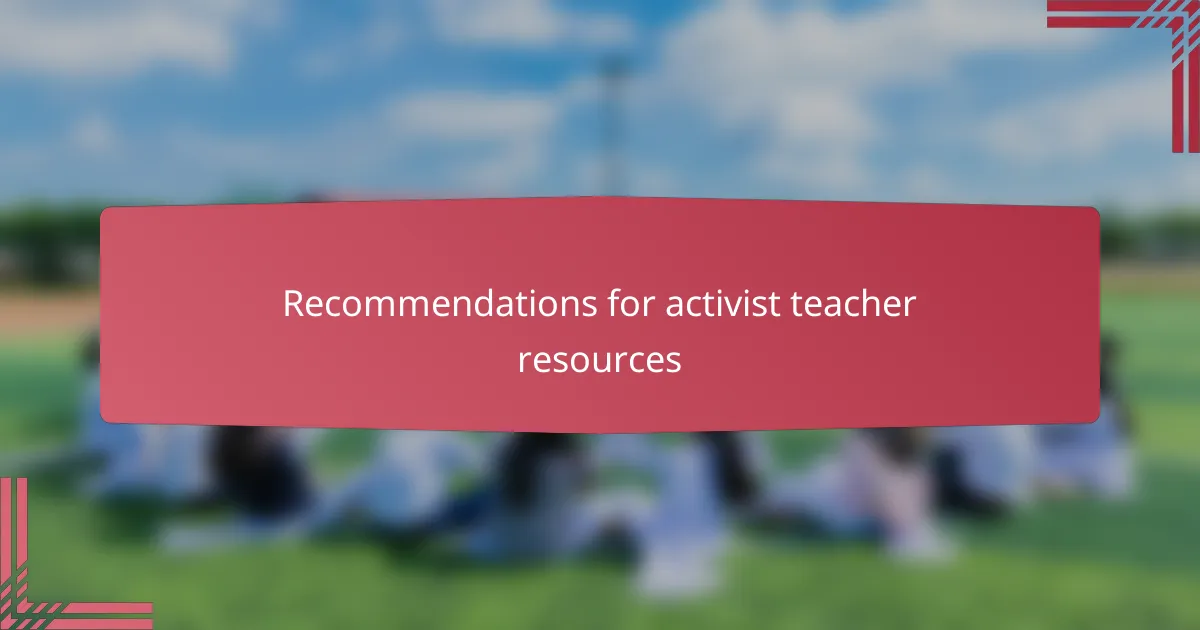
Recommendations for activist teacher resources
When it comes to activist teacher resources, I believe they should go beyond generic lesson plans and offer concrete tools that promote equity and student voice. Have you ever felt that most resources overlook the real challenges of diverse classrooms? Activist resources, in my experience, need to empower teachers to adapt formative assessments thoughtfully, reflecting each student’s lived experience.
Another recommendation I hold close is the importance of community-driven materials. Resources shaped by teachers who work on the front lines bring authenticity and practical wisdom that theory alone can’t capture. I often think about the times a peer-shared strategy completely transformed my approach—and isn’t that the kind of collaboration we want to see more of among activist educators?
Finally, it’s vital these resources encourage reflection—not just on student learning, but on teacher practice and systemic injustices. When I’ve used prompts that ask me to examine my biases or classroom power dynamics, the impact has been profound. Could resources that foster this level of critical self-awareness be the game changer for truly transformative teaching? I’m convinced they can.